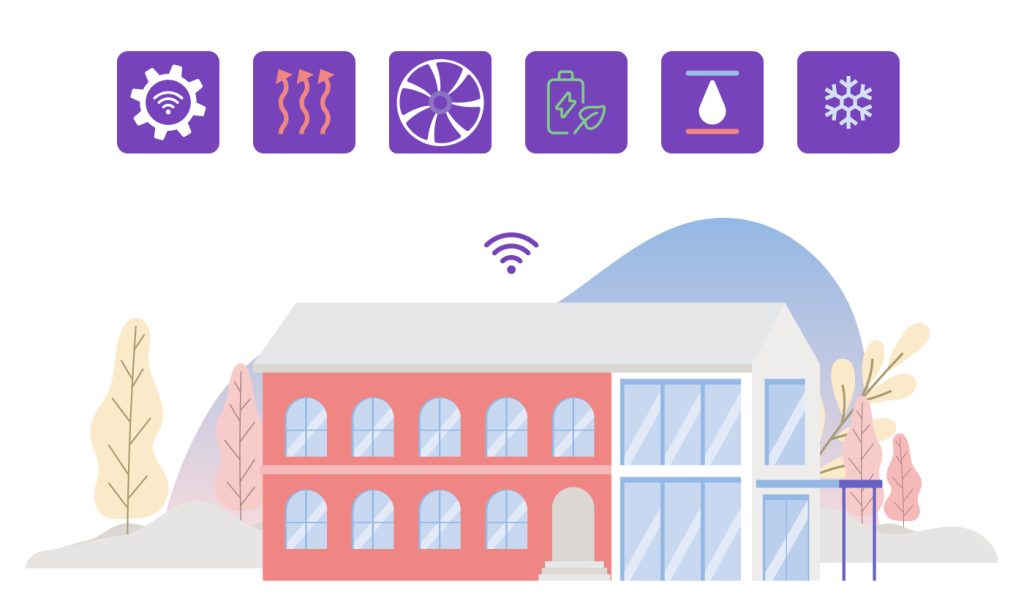In the world of technical building management and integration, three key systems often work together to ensure efficient operations: Building Management Systems (BMS), Supervisory Control And Data Acquisition (SCADA), and Energy Management Systems (EMS). Let's look at how they fit together.
Defining BMS, SCADA, and EMS
We are sticking to these three traditional systems for this blog post to keep things tidy. Firstly, let's define each of them to understand their roles better.
What is BMS?
A Building Management System automates and centralizes control of a building's core systems, such as heating, ventilation, air conditioning, lighting, and security. Its primary function is monitoring and managing these systems to ensure they function efficiently and effectively. The primary users of BMS are facility managers in commercial and industrial buildings. They use them to monitor, control, and optimize the performance of the building's core systems.
What is SCADA?
SCADA stands for Supervisory Control And Data Acquisition. It is a centralized system that collects and analyzes real-time data from a network of sensors, devices, and equipment. SCADA provides operators with a comprehensive view of the building's operations and allows for remote control and management. Operators and management personnel typically use them in industries where complex processes and systems need constant monitoring and control.
What is EMS?
An Energy Management System (EMS) is a system that explicitly targets energy consumption within a building. It monitors usage patterns, identifies opportunities for energy conservation, and allows for system optimization to minimize energy waste and costs. People using EMS include facility managers, sustainability officers, and energy consultants, predominantly within commercial, industrial, and residential buildings.
Understanding the differences
The benefits of a complete solution
Using all three systems in combination can significantly benefit building operations and management. However, it is essential to have a centralized platform that seamlessly connects these systems for optimal efficiency.
And here is where our solutions come into play. Our comprehensive building integration platform integrates BMS, SCADA, controller, and EMS data to provide a holistic view of building operations. Having a clear picture of all these systems allows for more informed decisions and greater control over energy consumption, resulting in cost savings and improved sustainability.

Connecting separate modules for greater efficiency
Our platform also allows connecting separate modules to existing solutions. By integrating with other systems, such as refrigeration or HVAC controls, our platform can enhance efficiency and provide valuable insights into building data. This integration allows for a more streamlined approach to building management, with all systems working together seamlessly.
Integrating AI and smart logic into our platform further increases efficiency and effectiveness. By using advanced algorithms and machine learning, these technologies empower the platform to predict potential issues, plan preventive maintenance, and optimize energy consumption dynamically. The nuanced insights derived from AI can help tailor strategies for each building, making operations smarter, more efficient, and more sustainable.
Although combining Edge + Web Port or IWMAC + Energinet is a natural choice, there is no problem integrating solutions from another supplier. By embracing different platforms and systems, we encourage people to choose the solution that best suits their needs.
Integrate systems to the Kiona Platform for seamless, holistic management
To sum it up, building management systems provide a comprehensive solution for technical building management. Be it BMS, EMS, or SCADA, each plays a crucial role in optimizing efficiency and sustainability. Our advanced platform offers building managers and integration experts the capacity to integrate these systems, offering a holistic approach to building management. Moreover, our focus on openness and flexibility ensures compatibility with various SCADA platforms, making it a versatile choice for any operation.
Harnessing the power of AI, we offer predictive insights and dynamic energy optimization, making every building smarter and more sustainable. Discover how our platform can enhance your operations, read more about our solutions.
Don't just manage your buildings – optimize them.